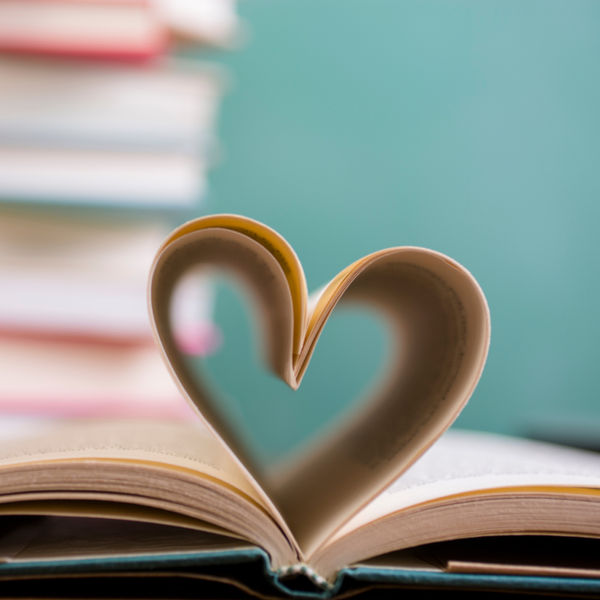Nonfiction writing is often perceived as dry and factual, but it can be as engaging and compelling as any fiction novel.
Imagine blending the authenticity of real-life events with the allure of a gripping novel.
By weaving in literary techniques and honing narrative structure, nonfiction writers can craft stories that are just as enthralling as any fiction masterpiece.
This article explores how nonfiction writing can be transformed into a story, providing practical examples and insights into the process.
Dive into this article to discover how you can turn your nonfiction writing into a spellbinding narrative, complete with practical examples and invaluable insights.
Key Takeaways:
- Nonfiction writing can indeed be crafted as a compelling story.
- Creative nonfiction blends factual accuracy with literary techniques to engage readers.
- Successful nonfiction often employs narrative structures similar to fiction novels.
- Incorporating narrative structure and character development is crucial for writing a successful nonfiction book.
The Essence of Creative Nonfiction
Creative nonfiction is a genre that combines the factual accuracy of nonfiction with the storytelling techniques of fiction.
Literary nonfiction, also known as narrative nonfiction, uses literary techniques to tell true stories in an engaging way.
This genre allows writers to present true stories in a way that is both informative and engaging.
By using elements such as character development, dialogue, and vivid descriptions, creative nonfiction can make real-life events come alive for readers.
Narrative nonfiction writers like Truman Capote, who wrote “In Cold Blood,” have demonstrated the power of this genre.
Capote’s work reads like a novel, yet it is a meticulously researched account of a true crime.
This blend of fact and fiction techniques creates a compelling narrative that keeps readers hooked from start to finish.
Role of Literary Techniques in Narrative Nonfiction
Incorporating literary techniques into nonfiction writing can transform a straightforward account into a gripping story.
These techniques are often found in literary fiction and can be effectively applied to nonfiction to enhance the narrative.
Techniques such as foreshadowing, flashbacks, and vivid imagery can add depth and interest to nonfiction books.
These elements help to create a sense of anticipation and engagement, making the reader feel as though they are part of the story.
For example, in memoir writing, authors often use flashbacks to provide context and background to their personal stories.
This technique not only enriches the narrative but also helps readers understand the motivations and experiences of the protagonist.
By weaving these elements into the narrative, nonfiction writers can create a more immersive and compelling reading experience.
Structuring Nonfiction as a Story
One of the key aspects of turning nonfiction into a story is the structure.
A well-structured true story written in a compelling way can captivate readers just as much as fiction.
A linear narrative, where events are presented in chronological order, is a common approach.
However, nonlinear structures can also be effective, especially when they add to the suspense or emotional impact of the story.
For instance, in true crime writing, authors might start with the crime itself and then delve into the background and investigation.
This approach can create a sense of mystery and intrigue, drawing readers into the story.
By carefully structuring their work, nonfiction writers can ensure that their stories are both coherent and captivating.
Developing Characters in Nonfiction
Characters are central to any story, and nonfiction is no exception.
Fiction writers often excel at character development, and nonfiction writers can learn from their techniques to make real people come alive on the page.
Even though the characters in nonfiction are real people, they can be developed and portrayed in a way that makes them relatable and interesting to readers.
This involves providing detailed descriptions, exploring their motivations, and showing their development over time.
In literary journalism, for example, writers often focus on the personalities and experiences of the people involved in the events they are reporting.
By doing so, they create a more human and relatable narrative.
This approach not only engages readers but also helps to convey the emotional and psychological dimensions of the story.
Importance of Research
Research is the backbone of nonfiction writing.
A narrative nonfiction writer must conduct thorough research to ensure the accuracy and depth of their story.
To create a compelling and accurate story, writers must gather detailed information about the events, people, and contexts they are writing about.
This involves not only reading and analyzing existing sources but also conducting interviews and firsthand investigations.
For example, when writing a travel book, an author might visit the locations they are describing, talk to locals, and immerse themselves in the culture.
This firsthand experience adds authenticity and depth to the narrative, making it more engaging for readers.
Thorough research ensures that the story is not only interesting but also credible and informative.
Balancing Fact and Imagination
While nonfiction must be based on factual information, there is still room for creativity and imagination.
In non fiction, writers can use their creativity to present facts in a more engaging way.
Writers can use their creative skills to present the facts in a more engaging and compelling way.
This involves finding interesting angles, highlighting unique aspects of the story, and using descriptive language to bring the narrative to life.
For instance, in a memoir, an author might use vivid descriptions and emotional language to convey their experiences and feelings.
This creative approach helps to create a more immersive and relatable narrative, making the story more impactful for readers.
By balancing fact and imagination, nonfiction writers can create stories that are both informative and captivating.
Examples of Successful Nonfiction Stories
There are many examples of nonfiction books that read like compelling stories.
These books demonstrate how a true story can be told in a way that captivates readers.
Truman Capote’s “In Cold Blood” is a classic example, blending meticulous research with narrative techniques to create a gripping true crime story.
Another example is “The Immortal Life of Henrietta Lacks” by Rebecca Skloot, which combines scientific facts with a deeply personal narrative.
These books demonstrate how nonfiction can be transformed into a story that engages and captivates readers.
By using literary techniques, focusing on character development, and structuring their narratives effectively, these authors have created works that are both informative and compelling.
Role of Personal Interests in Nonfiction Writing
Personal interests can play a significant role in nonfiction writing.
When writers are passionate about their subject matter, it often translates into more engaging and compelling narratives.
This passion can drive the research process, inspire creative approaches, and help to convey the emotional depth of the story.
For example, a writer with a keen interest in history might create a fascinating account of a historical event, bringing it to life with vivid descriptions and personal insights.
This personal connection to the subject matter can make the narrative more authentic and engaging for readers.
By tapping into their personal interests, nonfiction writers can create stories that resonate with their audience.
Impact of True Stories on Readers
True stories have a unique impact on readers.
They offer a glimpse into real-life events and experiences, providing insights and perspectives that fiction cannot.
This authenticity can create a deeper emotional connection with readers, making the narrative more impactful and memorable.
For instance, true crime stories often evoke strong emotions, such as fear, empathy, and curiosity.
By presenting these stories in a compelling and engaging way, nonfiction writers can create a powerful reading experience.
True stories have the potential to inform, inspire, and move readers, making them a valuable and impactful form of storytelling.
Future of Nonfiction Writing
The future of nonfiction writing looks promising, with more writers exploring creative approaches to tell true stories.
As readers continue to seek engaging and informative narratives, the demand for creative nonfiction is likely to grow.
This trend offers exciting opportunities for writers to experiment with different techniques and styles, pushing the boundaries of traditional nonfiction.
For example, the rise of self-publishing has made it easier for writers to share their stories with a wider audience.
This has led to a diverse range of nonfiction books, covering a wide array of topics and styles.
As the genre continues to evolve, we can expect to see more innovative and compelling nonfiction stories that captivate and engage readers.
Nonfiction Writing: A Bright Horizon for Storytellers
Incorporating literary techniques, honing narrative structure, and developing relatable characters can transform nonfiction into a compelling story.
This blend of factual accuracy and creative storytelling not only informs but also captivates readers.
As the genre evolves, the future of nonfiction writing shines brightly, offering endless opportunities for writers to explore and innovate.
So, why not start your journey today and turn your nonfiction into a spellbinding narrative?
Nonfiction Writing FAQs
Are you ready to dive into the fascinating world of nonfiction writing?
Whether you're a seasoned writer or just starting out, understanding the nuances of nonfiction can transform your storytelling.
From crafting true stories with the flair of fiction to mastering the art of creative nonfiction, this FAQ section has got you covered.
Let's explore how you can turn real-life events into captivating narratives that resonate with readers.
Can nonfiction writing be a story?
Yes, nonfiction writing can be crafted as a compelling story by using literary techniques and focusing on narrative structure. This approach helps to engage readers and make the narrative more impactful.
What is creative nonfiction?
Creative nonfiction is a genre that combines the factual accuracy of nonfiction with the storytelling techniques of fiction. It allows writers to present true stories in an engaging and compelling way.
How can I start writing nonfiction as a story?
To start writing nonfiction as a story, focus on structuring your narrative, developing relatable characters, and incorporating literary techniques. Thorough research and a passion for your subject matter can also help to create a more engaging and authentic narrative.
Interested in learning how to write nonfiction stories? Check out Book Launchers' video!
Want even more content about creativity and art?
Be sure to check out all of our creative chronicles!
Love writing and considering creating your own written masterpieces?
Check out some of our other articles:
-How do I start basic writing?
-How do I write a short story?
-What is a 100 word story called?







